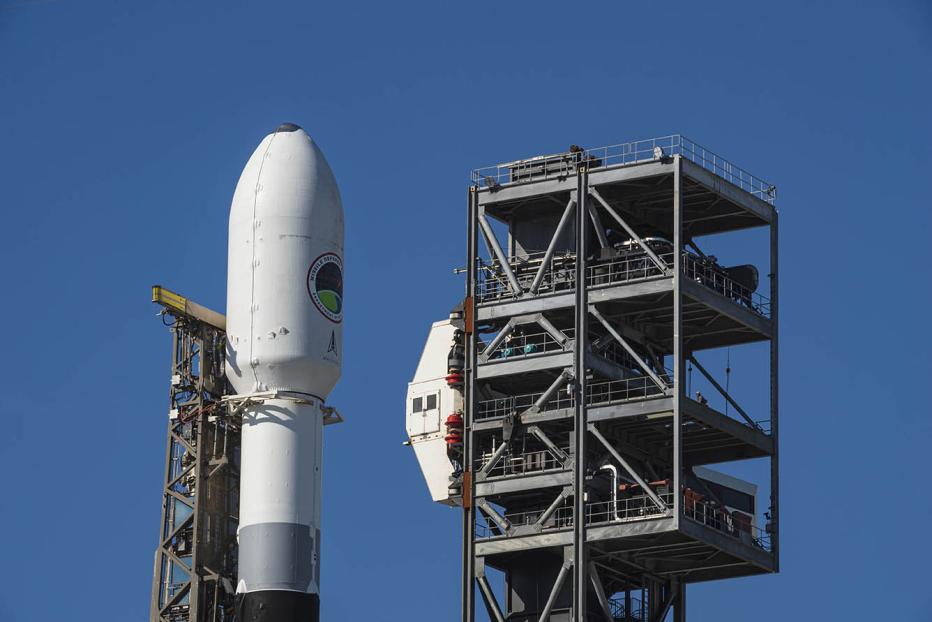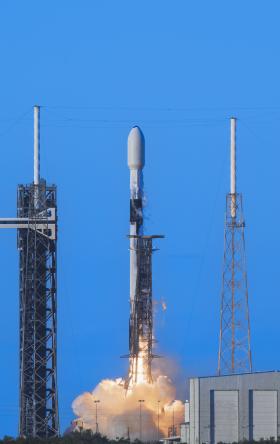
Hypersonic and Ballistic Tracking Space Sensor (HBTSS), image courtesy of the Missile Defense Agency
The Missile Defense Agency (MDA) successfully launched two Hypersonic and Ballistic Tracking Space Sensor (HBTSS) prototype demonstration satellites from Cape Canaveral Space Force Station in Florida this week.
These prototypes will demonstrate the capability to detect and track hypersonic, ballistic, and other advanced threats. Maneuvering missiles, such as hypersonic glide vehicles, create a challenge for existing defense systems. Their ability to travel on unpredictable flight paths at low altitudes makes it difficult to track them using standard terrestrial radar systems. Space sensors improve tracking and discrimination precision, offer unrestricted access to globally detect and track missiles, and provide persistent global coverage. The critical HBTSS capability for the Missile Defense System (MDS) is the ability to collect fire-control-quality data that will be handed off to linked weapons systems to engage advanced threats successfully.
“For the last five years, Jacobs has supported the Missile Defense Agency through the IRES contract. We are tremendously proud of the contribution our Jacobs Missile Defense Group is making to the defense of our nation,” says Jacobs Senior Vice President Mark Walter. “This remarkable milestone demonstrates the dedication and capability of every government, contractor, and military individual who contributes to the missile defense mission.”
Jacobs, along with its small business teammates and specialty niche subcontractors on the Integrated Research and Development for Enterprise Solutions (IRES) Contract, directly supported the planning, integration, and execution of the HBTSS launch. Most notably, IRES employees designed and built major components for the ground systems where the HBTSS ground mission software operates. This includes the enterprise architecture for space systems, enterprise ground services for the satellites, and a multi-mission space operations center. IRES employees continue to support the post-launch on-orbit demonstration of the prototypes through operations and sustainment of the enterprise ground systems and software from the Missile Defense Integration and Operations Center on Schriever Space Force Base.
Jacobs and its teammates provide an efficient, flexible, multi-purpose, capabilities-based contract to execute multiple objectives and requirements from multiple stakeholders in a dynamic environment. These objectives include (MDS) mission operations, testing, wargames and exercises, modeling and simulation, enterprise communications and information technology environment, operation of facility infrastructure, and the systems engineering and program integration of all this scope. Jacobs' ability to provide integrated solutions supporting concurrent testing, training, and operations for MDA enables more rapid and effective research, development, integration, and testing for the advancement of MDS capabilities.
Did you know?
- Missile threats include depressed ballistic trajectories, multiple independent re-entry vehicles, maneuvering re-entry vehicles, global hypersonic glide vehicles and long-range hypersonic cruise missiles.
- Hypersonic weapons can travel at speeds of Mach 5 or greater and can maneuver during flight to avoid detection.
- New missiles and existing system improvements in the threat environment also include precision strike, decoys and jammers.
- IRES is an MDA-wide contract vehicle designed to enable the MDA mission.























































